How do I determine Parasitic Loss Values?
“How do I derive the ‘Dyno Power loss – RPM-B’ values to enter (on the Run Information – Dyno tab) for my homemade chassis dyno?” These parasitic drag fields are used to return lost horsepower (and torque) – consumed by the dynamometer’s shaft bearings, drive belts, etc. – back into the displayed test results. For example: the roller’s windage and pillow block bearings rob energy that would normally be delivered to the pavement. It does not matter if you are doing inertial or steady state (absorption) testing, this is delivered Hp that never makes it into the data-acquisition computer!
Fortunately, it is relatively easy to perform your own coast down test, utilizing DYNO-MAX itself, for determining a very close approximation of these non-linear power losses. You will also need a small vehicle and a floor jack.
1) Place the vehicle onto the dyno without using straps! Wheel chocks alone will suffice, as no significant torque will be applied during this test.
2) If the dyno has a load cell, it must be properly calibrated and zeroed before beginning. The correct inertia values (for the roll assembly and any other drive components) must also be entered.
3) A floor jack under the axle (or an overhead lift for a bike dyno) should be in place – to lift the tires off the rolls during coast down.
4) Prepare DYNO-MAX for a manual recording. But do not press the console’s Record button – yet. Stay in Knob (no load) mode!
5) With the test area clear, gently accelerate the vehicle to bring the dynamometer up to normal test speed. Then signal the driver to lift off the throttle and disengage the vehicle’s transmission.
6) With the rolls coasting, jack the tires just clear of the roller(s).
7) Press DYNO-MAX’s Record button to capture the coast down.
8) Once the dyno falls below 30 MPH (this takes some time), press Pause and then save the recording.
9) Edit Graph Set Up and use Time Averaging 0.0 second to graph Engine Power (only). Uncheck the Y-axis’s “Lock Low to Zero” box, as you are graphing negative (lost) power!
10) Modify the Dyno Power loss – RPM-B Hp and Exponent fields (on the Run Information – Vehicle tab) to flatten (zero out) the negative horsepower graph line. Experiment to get the flattest overall line!
Tip: Try an exponent of 2 as a good average for the various parasitic loss curves involved. Leave the ‘RPM’ field at 5252, as it is merely a scaling anchor for generating the exponential curve.

11) That’s it, these two fields’ values may now be entered into the next New Run as your default Dyno Power loss – RPM-B values.
Tip: See DYNO-MAX’s online Help, under the topic of “Calibration – Dyno Power loss – RPM-B,” for more information on this subject.
